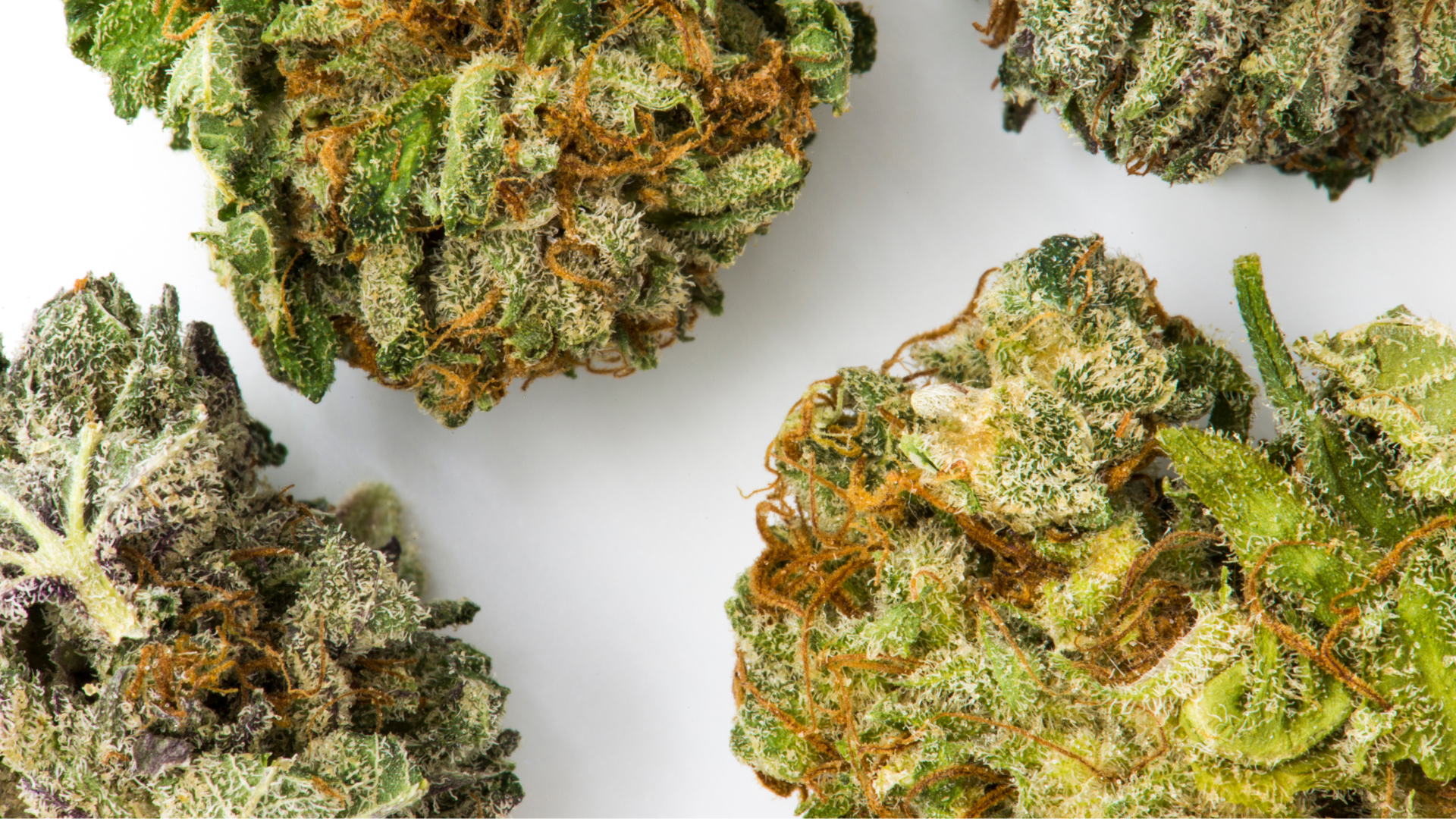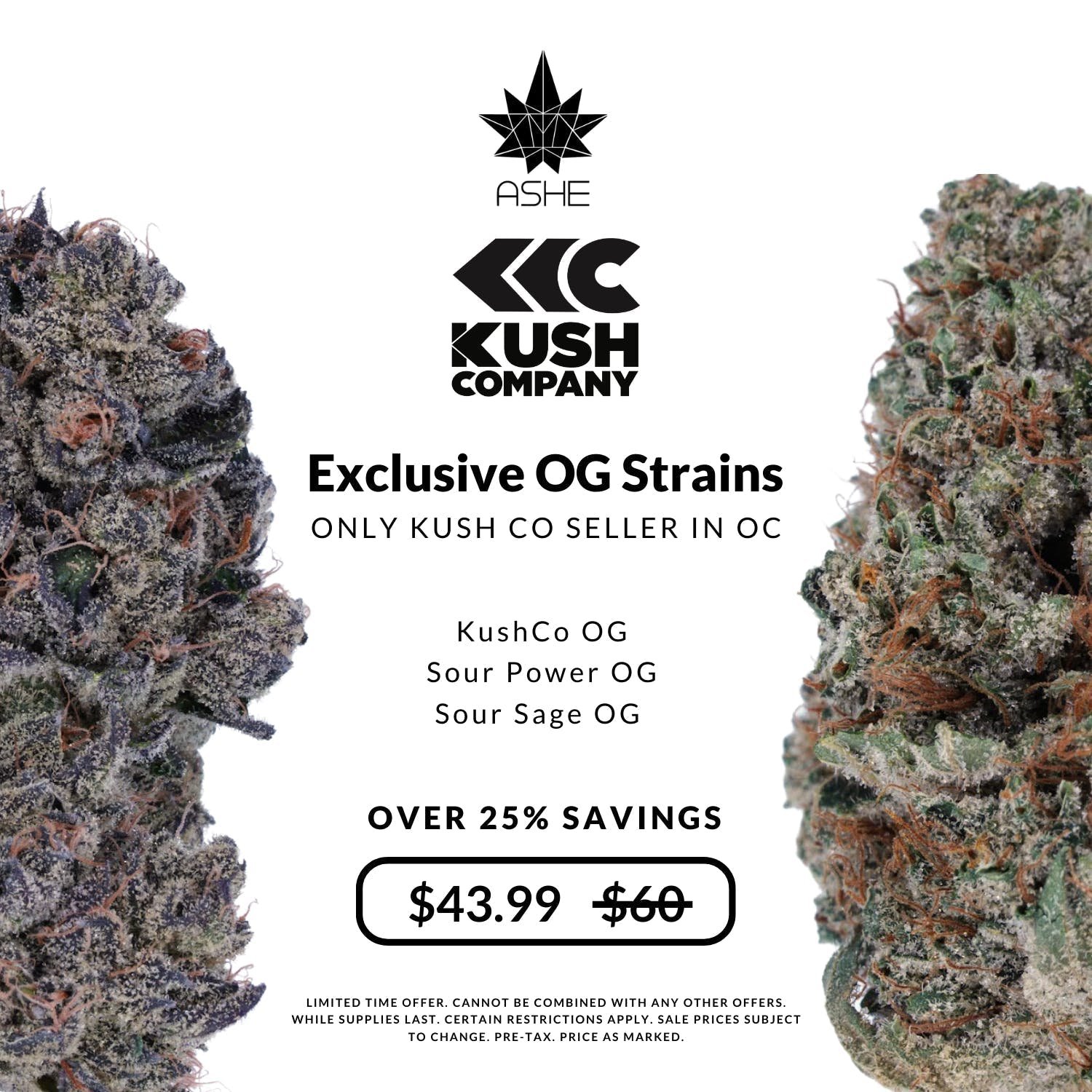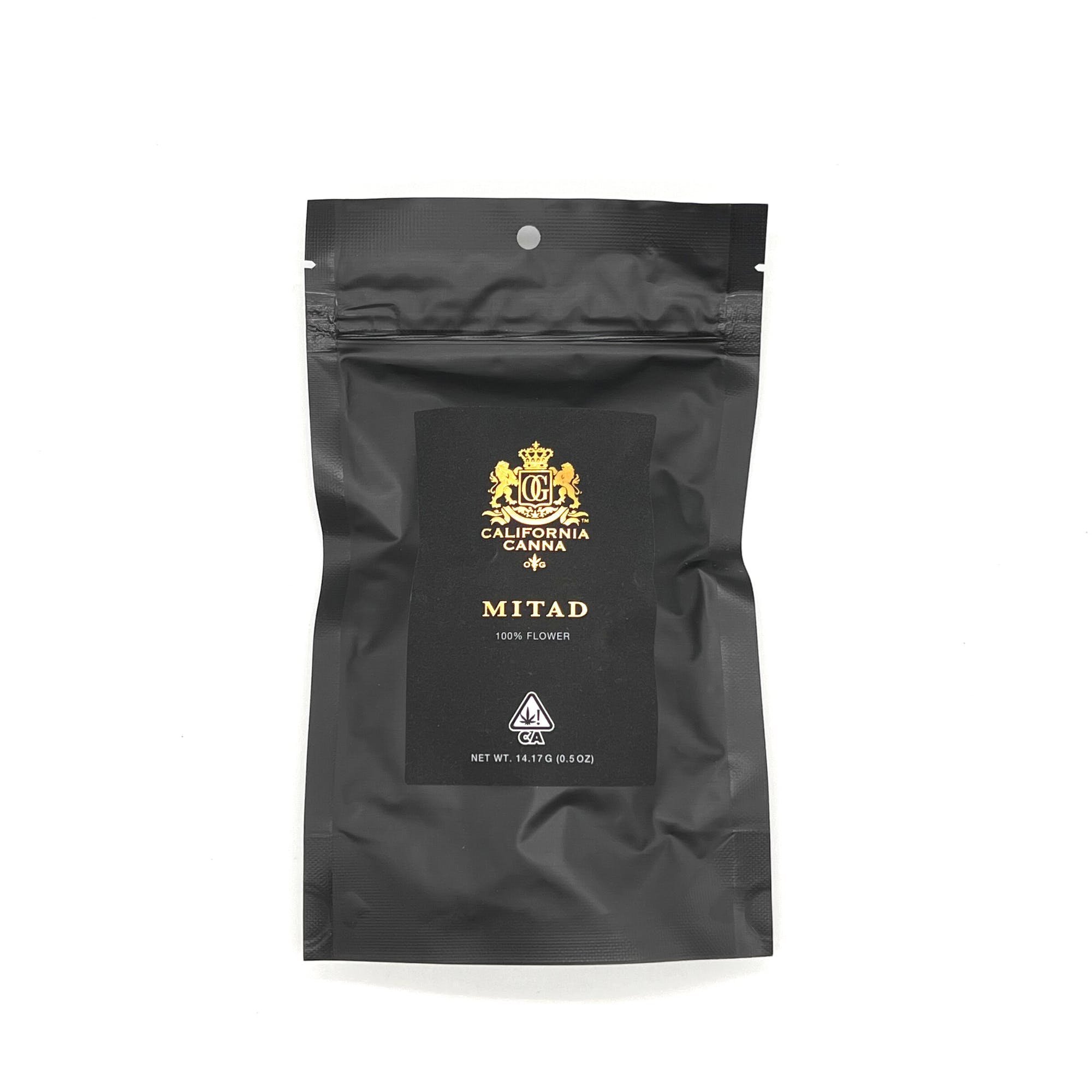The Legend of the OG Strains
Why are they so in demand? And what does ‘OG’ stand for anyway?!
You’ve heard the names tossed around: True OG, SFV OG, Tahoe OG, Bubba OG, not to mention the OG of all OGs, OG Kush. But what’s so special about them anyway? Why do stoners everywhere flip for these flowers, and what is ‘OG’ an abbreviation for?
Let’s start with the second question, ‘OG’ stands for ‘Ocean Grown’. ….Probably. More on that doubt in just a second.
Sorry to disappoint if you assumed it meant ‘Original Gangster’, but we could see how you could arrive at that conclusion. And it’s not totally off-base, in fact, the abbreviation is disputed fairly regularly. But there are three most likely contenders each with plausible back stories that cannot totally be confirmed nor ruled out, due to the clandestine nature of the California cannabis scene.
Time for a quick digression.
See, in 1996, Californians passed Prop 215, which you may also know as the Compassionate Use Act. It legalized the sale and use of marijuana for medicinal purposes, a move that flew in the face of the Federal Government who then classified (and still does today) marijuana as a Schedule I substance.
This schedule erroneously places it in a category of drugs defined by the government as having no acceptable medical use, as well as a high potential for abuse—which is defined as severe physical or psychological dependence. This places marijuana on par with drugs such as heroin and PCP.
For reference, fentanyl—which was responsible for 64,000 deaths in 2021 alone and is the leading cause of death in adults aged 18-45 according to the CDC—is ranked below cannabis as a Schedule II substance. Between 2020 and 2021, fentanyl overdoses were responsible for roughly twice the amount of deaths or more as COVID-19, cancer, car accidents, and suicide during the same time period. In 2022, The Administrator of the DEA, Anne Milgram, delivered this quote: “Fentanyl is the single deadliest drug threat our nation has ever encountered. Fentanyl is everywhere. From large metropolitan areas to rural America, no community is safe from this poison. We must take every opportunity to spread the word to prevent fentanyl-related overdose death and poisonings from claiming scores of American lives every day.”
By contrast, cannabis has never been named a major factor in a single-substance intoxication death, not here in the U.S. nor in Denmark, Iceland, Finland, Sweden, or Norway—five countries that in 2007 and in 2012 studied and conducted medico-legal autopsies and toxicology analyses of fatal intoxications among drug addicts.
Besides this, research has definitively shown that it has medicinal purposes with researchers from Amity University stating that cannabis has medical value not only in treating chemotherapy side effects, but also as a primary treatment by causing the death of cancer cells: “THC and CBD exhibit effective analgesic, anxiolytic, and appetite-stimulating effect on patients suffering from cancer. Apart from exerting palliative effects, THC also shows promising role in the treatment of cancer growth, neurodegenerative diseases (multiple sclerosis and Alzheimer’s disease), and alcohol addiction and hence should be exploited for potential benefits,” specifically, they’d singled out the power of cannabinoids to, “exert potent [anti-growth] activity and activate various apoptotic mechanisms eventually leading to cell death”, in this case referencing cell death of an aggressive form of brain cancer called glioma.
Research such as this has been echoed in the United States and other countries and has even resulted in the first FDA approved medication whose active ingredient is cannabis derived. It’s called Epidiolex, and was developed for treatment of severe seizures—one form of which was previously considered untreatable—in patients age two and over.
Why bother covering any of this information?
Just to give you a picture of how skewed and polarized the U.S. federal government’s position has been historically and still is today. Consider the fact that we have a legal medical drug today that has been synthesized from cannabis and that research has proven effective and is dispensed to the public—all of these facets being technically forbidden at a federal level due to cannabis’s status as a Schedule I substance—and yet the DEA still hasn’t modified cannabis’s classification as a controlled substance, or removed it entirely to place it on par with alcohol; a substance which kills more people per year than all other drug overdoses combined.
That should give you a picture of just how much of a bone-to-pick the U.S. Gov has always had with cannabis, and clearly still has today. And you need that backstory to truly understand the origins of the OG strains. Consider that OG Kush—the first official OG strain—hit the scene in the 1990’s, back before a historic amendment was passed that barred the federal government from using their funds to prevent 33 states (California included) from “implementing their own State laws that authorize the use, distribution, possession, or cultivation of medical marijuana.”
The amendment first passed in 2007, so between 1996 and then, the California cannabis industry was half-thriving, half-clandestine. While California had stated that production of medical cannabis was an allowed activity in the state, authorized growers still had to worry about the DEA getting wind of their operations, whether by word of mouth, wire-tapping, or helicopter fly-overs which sought to find large outdoor grows from an aerial vantage point. No one could out-and-out claim that any strain was their own creation without risking a federal prison sentence, and the seeds of strains new and old were smuggled across national and international borders sans paperwork to prevent detection by authorities.
In states like Florida—where OG Kush was first cultivated—cannabis remained totally illegal, so operations were even deeper underground; Florida only just recently legalized medical marijuana in 2016. Legalizing a recreational industry within the state is a matter which may end up on the 2024 ballot thanks to the work of cannabis advocates.
Without any regulatory framework, credit was maintained through gossip and strain lineages and cultivation techniques were kept in the minds of their original growers. That meant anyone could claim anything, and if a rumor got popular enough it tended to take hold as truth; the real truth never to be known one way or the other—save for those who knew it first-hand. And thus, the mystery and the legend of the OG strains (and many others) was born.
The ‘Most Likely’ Stories Behind OGs
You remember earlier, when I said ‘OG stands for Ocean Grown….Probably’? ‘Course you do, you’re not that stoned right now, are you? Anyway, the uncertain origins of any given strain brought to fruition during that time period in California is to blame for that ‘probably’. But luckily, the truth, or fragments of it, appear to have lived on through rumors that have circulated the cannabis community for around 30 years now.
OG: Ocean Grown
This belief descends from a little story about a Nor Cal grower who had created the SFV (San Fernando Valley) strain. The story goes that he ended up in a smoke sesh with a person who claimed to have some spectacular bud. It happened to be the strain he’d created, SFV! When the stranger suggested it was ‘Mountain Grown’ flower, he corrected, calling it ‘Ocean Grown’—indoor flower originating from the California coastal region.
OG: Slang, ‘Original’ ‘Old School’
This urban legend has some weight because it’s been confirmed by a grower who now identifies himself as part of the original trio that cultivated OG Kush. He claims that ‘OG’ was meant in the slang sense, meaning something ‘authentic, legit, an original’. No fakers or copies here.
OG: Original Grower
This story was popularized by the Netflix documentary, ‘Murder Mountain’. It’s speculated that the term OG stood for ‘Original Grower’—a reference to the individuals who originally smuggled Afghan Kush seeds back to the US.
So as you can see, the term ‘OG’ has a storied past. But it might be a bit easier to pin down just why we love OG’s so much, as opposed to why the heck we call them that.
Why an OG? What’s so great about them?
Well, let’s talk a little more history. Once upon a time, there weren’t 5 million-and-a-half strains of cannabis. There were just five: Afghani, Thai, Nepalese, Hindu Kush, and Aceh. Of the five, only two names represented plants we classify as Indicas, Afghani and Hindu Kush.
OGs (OG Kush especially) are supposedly descended from the first American crossings of these ancestral flowers. They hit the scene at a time when most people were smoking what are called ‘pure landrace flowers’—or strains existing more or less in their wild, natural state—and represented a pivotal point in cannabis history: the emergence of cannabis cultivation in our nation.
Without cultivation, we wouldn’t have the host of strains today that have been manipulated to suit the desires of smokers everywhere. We have strong plants, weak plants, full-spectrum plants and not, high THC, low THC, CBD only, plants that give indica-range effects, plants that give sativa-range effects, and plants that give both at once or a unique mixture of the two. We’ve made manipulation of the cannabis plant into an art, but when OGs were first coming into their own, it was a budding area of the industry. Yep, lousy pun intended, deal with it.
So essentially, the tag ‘OG’ became associated with an emergent form of flower that was way stronger, and decidedly Indica-based in its effects (although they technically constituted some of the very first hybrids). It became synonymous with ‘heavy potency’, and most OGs on the market tended to be indoor-grown due to the high value of their names; growers could make their dime without having to risk large, easily smelled, and easily spotted outdoor grows. Of course, that didn’t stop some ballsy outdoor afficionados from producing the plants under the golden rays of the sun (and making a killing at it), either.
So, is there anything special about OGs? Definitely. Those on the market today are descended from generations of the bangers that came before them, and it shows. When you’re looking for a flower that combines heavy sedation, euphoria, pain relief, and duration of effect, you can put your trust in an OG to get the job done.
That said, it bears mentioning that it’s worth it to view the lineage of new kids on the block. While strains like OG Kush, SFV OG, and Tahoe OG have questionable origins due to the historic secrecy of the cannabis industry, they are time-tested and time-honored strains that you can rely on. Newer strains introduced by today’s growers and those of the 2010’s shouldn’t be cast aside, but you’ll want to take a look at their genetic background to determine if those new plants are capable of delivering the same experience as the OG Forefathers. It’s a good idea to research brands as well; if you can trust a brand, then you can trust that the flower in their jar is exactly the strain it says it is on the label.
Still, in most cases, an OG is gonna slap. And if all else fails, remember these names—you can rely on these strains to give you the full OG treatment, every time, no lemons.
Click the images below to purchase the OG that’s calling your name:
KushCo OG
35.4% THC | $43.99/3.5G
Are you a fan of big, chunky, trichome-laden buds? What about heavy, sedative, but somehow mellow highs? You’re gonna love this strain, and you’ll love the mileage you get out of it even more.
KushCo OG is a great example of a new-age OG that honors its ancestral reputation. It’s a delicious, potent little bud that this author has personally been smoking on for a hot minute.
Tahoe OG
38.3% THC | $29.99/3.5G
Tahoe OG is one of those strain names that you can’t spend long around cannabis without hearing. It belongs to the original suite of OGs like OG Kush and SFV OG. Known for its pain-relieving ability and powerful stress-relieving effects, it’s a strain that bud-purists have long kept to.
Cultivation has focused around increasing the potency of effects, while maintaining type: as in bud structure and the type of effects given. Expect to see a thick layer of trichomes on a well-bred Tahoe OG, along with a bright green leaf and orange guardhairs. Any purpling should be mild and contained to the coronets.
SFV OG
33.2% THC | $35.99/14G
There are two huge opportunities with this product: foremost, the chance to taste a true SFV OG bud grown by a legacy grower (that means these guys have been growing since well before the recreational industry was formed). You’re gonna get the distinctive taste of SFV OG, sharp, refreshing pine and citrus. The head high hits fast and then the characteristic creep of the body high comes on. This one-two punch and strong ‘pain-relieving-minus-the-couchlock’ effects is why SFV OG is one of the most demanded strains on the market.
California Canna is gonna shoot you 14Gs—a half ounce—for just $35. You’re not going to come across a better deal than this, not on genuine SFV OG at least!
White Walker OG
30% THC | $48.99/3.5G
If you see this flower in stock, grab it. It sells out fast. White Walker OG is a newer strain that produces a truly beautiful flower; pale green with heavily distributed tangerine colored pistil hairs and a snowy white dusting of trichomes. Part of why this flower smacks so hard is because of that heavy distribution of the orange hairs, which are some of the most resinous (read: potent) parts of the plant that you can smoke. Cannabiotix’s WWOG happens to be another personal favorite of this author’s.
White Walker OG gives more of a hybrid-spectrum of OG effects, crossing a powerful, rolling body high with cerebral stimulation. Initially you’ll experience a pleasant weightlessness and mild euphoria before the bud will settle you into a deeply relaxed state from which you can happily drift off to sleep.
Platinum OG
33% THC | $35.99/14G
Here’s another classic strain offered at just $35 for a half-ounce—14gs! It’s an unbelievable deal, particularly on one of the hottest OG’s in California. Platinum OG is one of the most outcrossed OG strains, meaning that it’s one of the plants most frequently bred with others to produce new strains. This is because it’s a strong flower that grows well, ‘Platinum’ being a nod to the thick, sparkly coating of trichome crystals the flowers are known for.
Its effects and structure are so potent and so desireable that it is frequently crossed into other lines to improve their structure and potency. Known for giving a very powerful high, it can be intimidating for beginners. But if you have a low tolerance, simply start small and wait for the effects to set in before taking another puff. You’ll be shocked by how many bowls you’ll be able to pack with just an eighth of this power flower—14g’s is gonna last you a good, long time.







